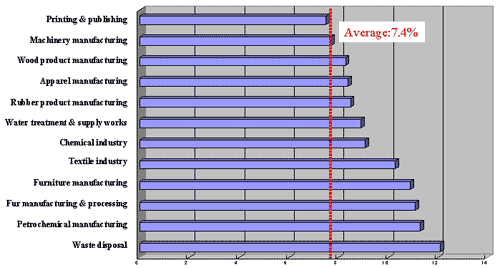Energy-saving
effect by 1 day-audit
(Average energy-saving rate by industry)
(Average energy-saving rate by industry)

Sample
No.: 1,455 |
Audit
effect Energy-saving rate (%) |
| AEEC Home | Training Index | Index | Top | Previous | Next |
| Traing Text | MALAYSIA |
|
Results of
1 day-audit for factories |
|
|
|
Energy-saving
effect by 1 day-audit (Average energy-saving rate by industry) |
||

|
|
Case example
of audit (1): Water supplying works |
||
|
|
Case example
of audit (2): Food manufacturing industry |
||
|
|
Case example
of audit (3): Petrochemical product manufacturing
|
|||||
|
|
Case example
of audit (4): Plastic product manufacturing |
||
|
7/19 Next |
| AEEC Home | Training Index | Index | Top | Previous | Next |
Copyright(C) ECCJ 1996-2019 |